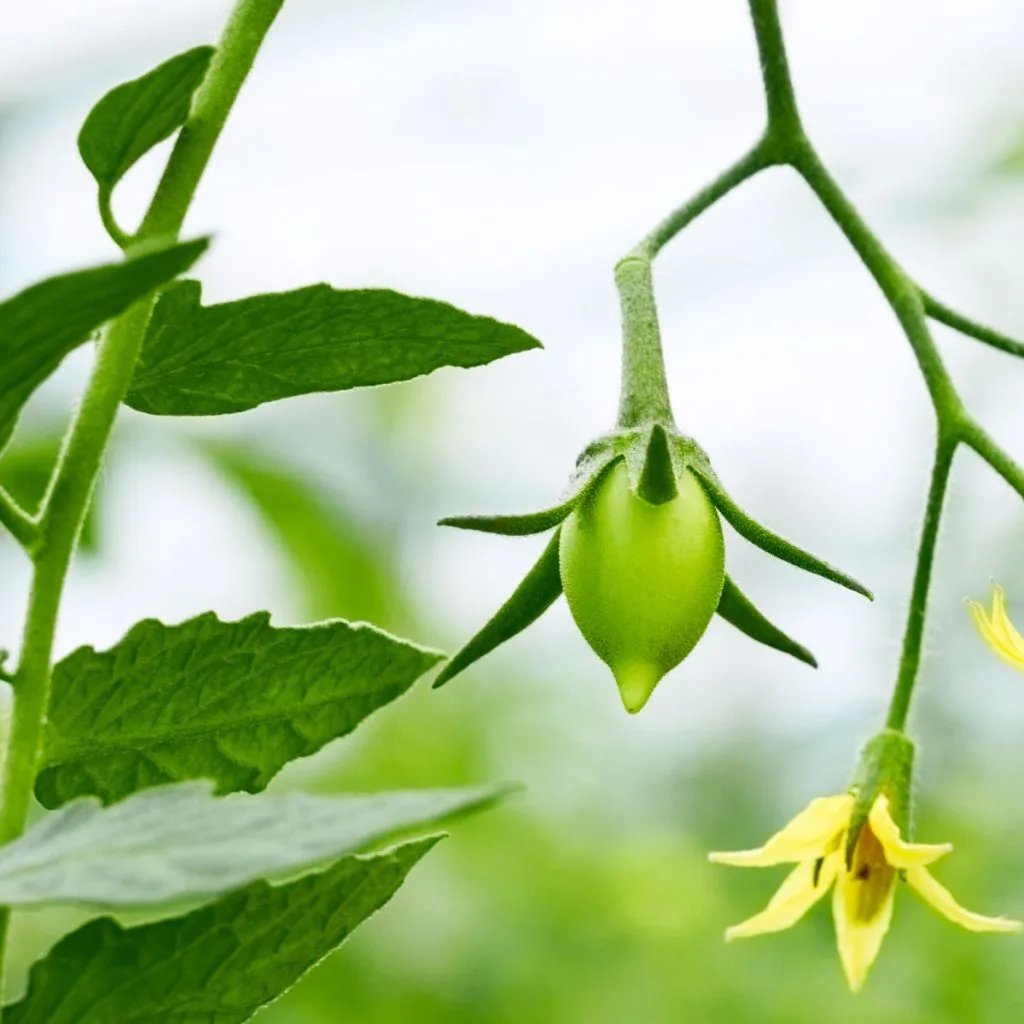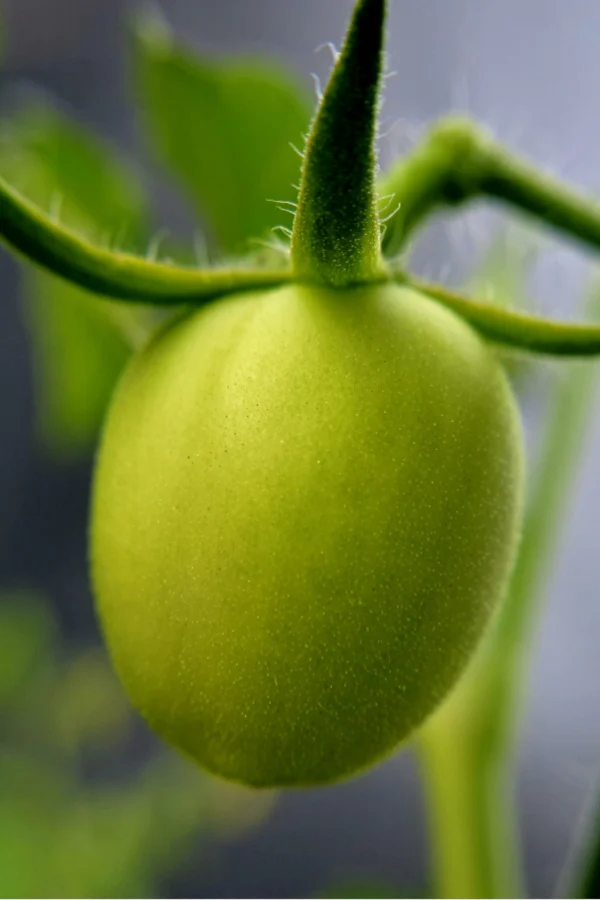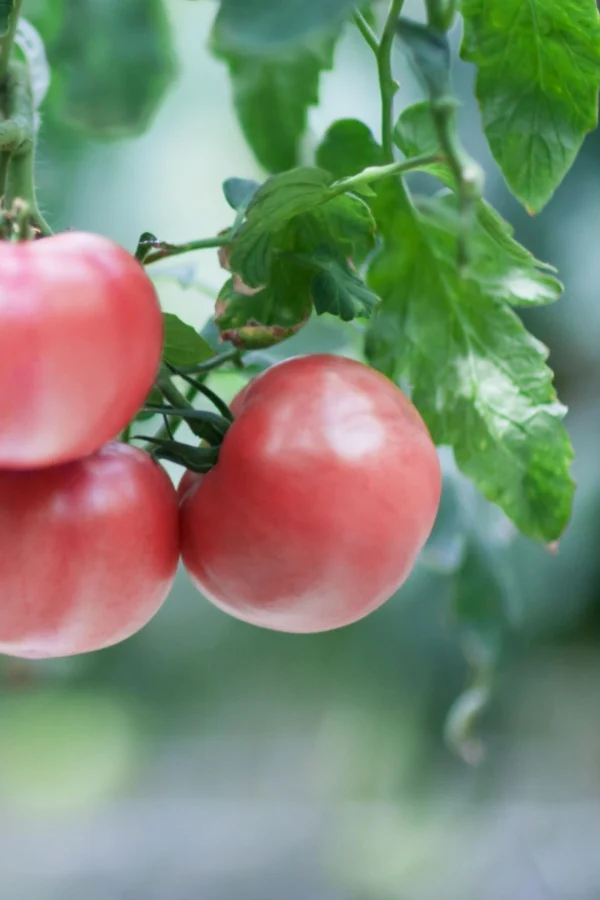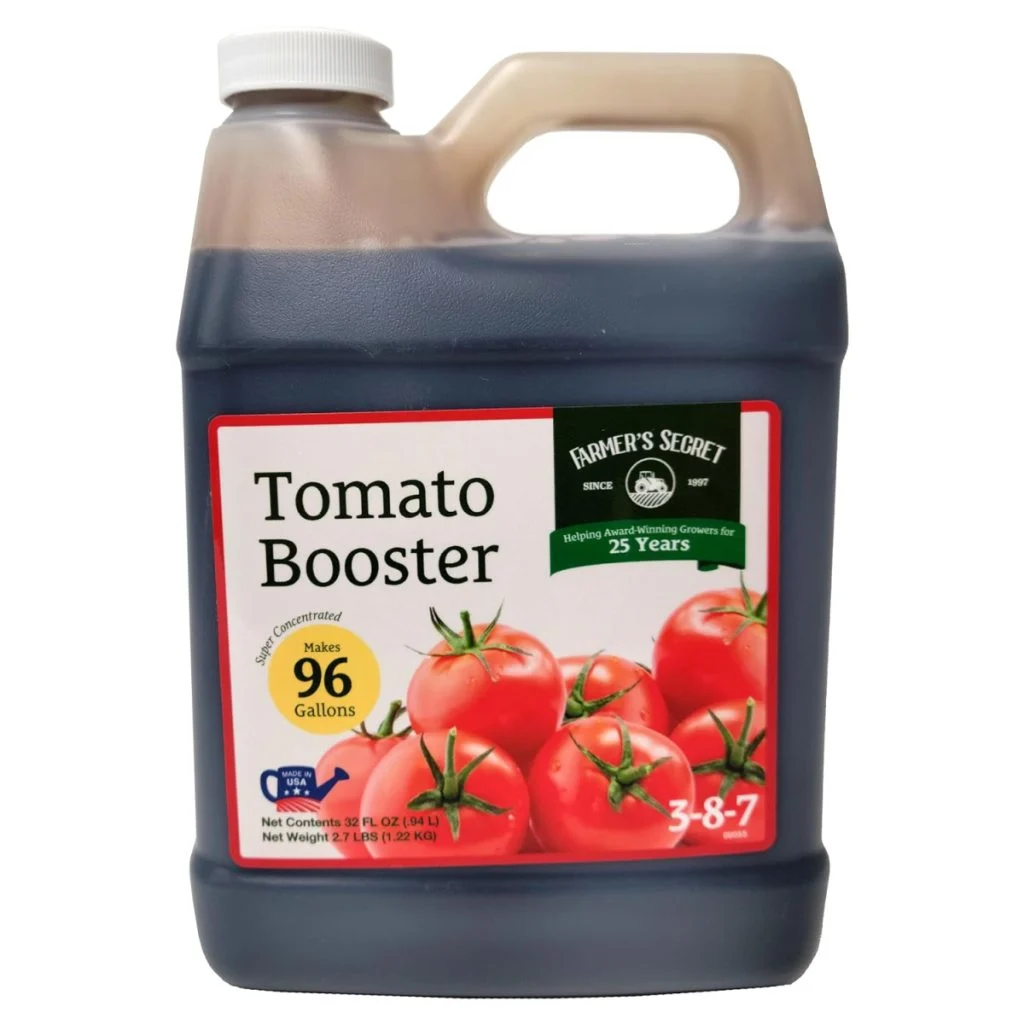Did you know that one of the most important things you can do for your young tomato plants is remove the early tomato blossoms and tomatoes that appear on your plants?
When your tomato transplants first start to grow, it can be exciting to see flowers and tiny fruits appear. But believe it or not, if you really want your tomato plants to grow strong and produce a big harvest later on, the best thing you can do early in the season is to remove those first blossoms. And – even the small tomatoes that start to form!
As difficult as it might be to clip off those early signs of fruit, doing so is one of the smartest things you can do for the long-term health and productivity of your tomato plants.

Why You Need To Remove Early Tomato Blossoms & Tomatoes
Tomato plants need a strong foundation before they can support a large harvest. In the first several weeks after planting, a tomato’s main job needs to be focused on growing a deep and wide root system, developing a thick central stem, and producing plenty of healthy foliage.
All of these parts help the plant collect water and nutrients from the soil. They also support future branches and fruit. But most importantly, all of the stems and foliage help the plant to perform photosynthesis to gather energy from the sun.
But when a plant starts putting out flowers too early, all of that important growth can slow down – or even stop altogether.
When tomato plants begin to flower and set fruit early, they start using up their energy stores to support the development of those fruits. It might seem like a good sign, but the truth is, these early fruits can take a toll on your plant.
Instead of putting energy into establishing roots and stems, the plant diverts its energy to feeding fruit that really isn’t worth growing yet. And unfortunately, the first few tomatoes a young plant produces are usually small, slow to ripen, and not very plentiful.

When To Remove Tomato Blossoms & Tomatoes
So when do you remove the fruit and blossoms and for how long? The ideal time to remove early blossoms and fruit is within the first four to six weeks after you transplant your tomato plants into the garden.
During this period, the plant is adjusting to its new location, stretching its roots into the soil, and getting used to the outdoor environment. It’s a critical growth stage. If the plant focuses on fruit development too early, it may never grow to its full potential.
Simply pinch off any flowers or small fruits you see during this time. It’s a quick and easy task, but one that makes a big difference.
Removing early blossoms doesn’t harm the plant – it helps it. When you remove the flowers, the plant doesn’t panic or go into shock. But the funny thing is, leaving those blossoms and fruit on can actually cause it a little shock!
A Tomato Plants First Tomatoes
Since the plant is still young and not at full strength, it struggles to feed and ripen the tomatoes quickly. As a result, they stay on the vine longer, using up even more energy. How long? The first tomatoes that form on a plant can take as much as five times the amount of days to mature!

The plant is stuck in a loop. It puts more and more of its limited strength into a few small fruits. This delay in ripening means the plant gets off to a slow start. Even worse, it won’t have as much time to produce as many new blooms and fruits as it should.
By giving your tomato plants the full four to six weeks after transplanting to grow and develop without the extra demand of producing fruit, you’re setting them up for a season of success. After this point, your plants will be stronger and ready to handle the work of flowering and fruiting.
You’ll also start to notice that the flowers they produce later are more numerous. And even more, those blossoms lead to much larger and faster-growing tomatoes. That’s the reward for your early patience and care!
Don’t Forget To Fertilize
As the plant hits the four to six week mark, it’s time to help it with more energy. That can all be done with fertilizer – but it needs to have the right mix. The key is to use a liquid fertilizer that has a higher level of phosphorus and potassium than nitrogen.
Nitrogen is important early on for green growth. But once the plant is ready to begin flowering again, it needs phosphorus and potassium. Phosphorus is critical for flower and root development. Potassium, meanwhile helps the plant build strong cell walls and supports fruit growth.
When you use a fertilizer with a higher middle and end number on the label, you’re giving your plant the exact nutrients it needs at this important stage. These fertilizers help encourage strong flower sets and larger fruit development. All while keeping the plant balanced and healthy.
Why Liquid Fertilizers Are The Best Option
Liquid fertilizers are especially helpful at this stage. That is because they can be absorbed quickly through the soil and through the leaves. This means tomato plants can take in the nutrients right away and put them to work fast. Affiliate Link: Farmer’s Secret Tomato Booster Fertilizer (32oz)
It’s best to apply a liquid fertilizer every ten to fourteen days. Do this once your plants are past the early growth window. This kind of regular feeding helps keep the plant energized as it enters its prime fruiting phase. See also: How To Fertilize Tomatoes With Liquid Fertilizer – And The Best Way To Do It!
Throughout all of this, keep watching your plants for new blooms. Once you’re past that initial 4 to 6 week window, you no longer need to remove the flowers. In fact, you want as many blooms as possible at this point.
Thanks to the early removal of blossoms, your plant will be in the perfect position to grow lots of healthy, flavorful tomatoes all season long!
I Grow Tomatoes
Follow Our Facebook Page For Even More Great Tomato Growing Tips! I Grow Tomatoes Facebook Page
I Grow Tomatoes is a website created for those who love all things about tomatoes – from planting and growing – to cooking and canning! We publish two articles every week, 52 weeks a year. Sign up today to follow via email! This article may contain affiliate links.

